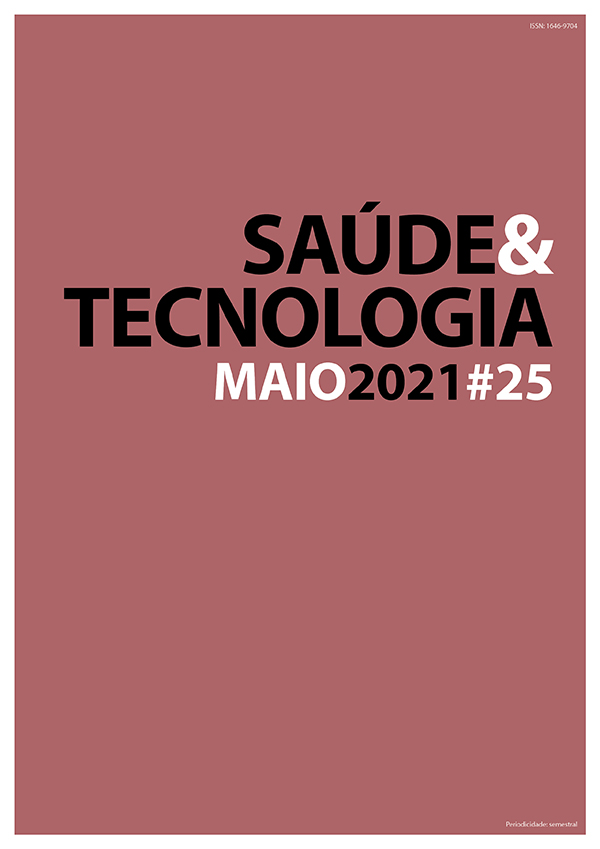Videos: contribution to the practical teaching in the disciplinary area of Orthoptics at ESTeSL
DOI:
https://doi.org/10.25758/set.2286Keywords:
Mobile learning, YouTube, Videos, Education, Orthoptics evaluationAbstract
Introduction – Technological development leads to the acquirement of new learning methods which are complementary to the traditional ones. With mobile learning emerging as a distance education method, mobile devices are used to learn. In the field of Orthoptics and Science, we have not found yet enough credible visual content in the Portuguese language. Objectives – Provide students videos executing several clinical evaluation exams, which will increase the learning process curve in the clinical practice of assessing ocular motility and binocular vision.
Methods – Quantitative, observational, and prospective descriptive study with a sample of 108 students (n=108). Recording of thirteen videos about Orthoptics clinical practice and posteriorly publishment in the platform YouTube. To assess students’ perception of watching videos as a facilitating contribution to the practical learning process, a previously validated poll was given to the students of the Orthoptics and Vision Sciences Degree at Escola Superior de Tecnologia da Saúde de Lisboa. Results and Discussion – Most of the sample’s gender was female (80.56%) where the age ranged from 18 to 37 years old, with an average of 21.12±2.96; 29 answers from the degree’s 1st year (26.85%); 26 from the 2nd year (24.07%); 18 from the 3rd year (16.67%); 35 from the 4th year (32.41%). The respondents consider the videos to be a complementary way of studying; 98.14% (n=106) answered that the videos stimulate motivation and interest; 96.30% (n=104) reported acquiring knowledge faster through videos; 92.59% (n=100) have the interest to use it while studying. Conclusion – The videos are a complement to traditional individual study.
There is also a concern in broadening the YouTube channel to other areas in the visual sciences, including examinations to individuals with visual pathologies.
Downloads
References
Despacho no 1696/2018, de 15 de fevereiro. Diário da República. 2ª Série;(35).
Morais NS, Pombo L, Batista J, Moreira A, Ramos F. Uma revisão de literatura sobre o uso das tecnologias da comunicação no ensino superior [A literature review ofthe use of communication technologies in higher education]. Prisma.com. 2014;(24):162-85. Portuguese
Pavel C. Using visual content in your marketing. Quaestus Multidiscip Res J. 2014;(5):164-8.
Batista A, Pires Â, Brito E, Rodrigues F. O uso das TIC como ferramenta da aprendizagem [The use of ICT as a learning facilitator tool]. Rev Estud Investig Psicol Educ. 2017;13:105-9. Portuguese
Wink S, Ahlert EM. Vantagens percebidas no uso de ferramentas interativas e colaborativas da Google: um estudo de caso com estudantes da educação profissional da Univates. Lajeado: UNIVATES; 2017. Available from: https://www.univates.br/bdu/handle/10737/2046
Salgueiro MG. Um olhar sobre as TIC no ensino do Português: conceções e práticas docentes no concelho de Almada [dissertation]. Lisboa: Instituto de Educação da Universidade de Lisboa; 2013.
Traxler J. Aprendizagem móvel e recursos educativos digitais do futuro. Cad ERTE-SACAUSEF VII. 2011;(7):35-46.
Ambrózio MD. Vídeos em contextos universitários de ensino-aprendizagem [dissertation]. Porto: Faculdade de
Engenharia da Universidade do Porto; 2017.
Ng CH, Lim GR, Fong W. Quality of English-language videos on YouTube as a source of information on systemic lupus erythematosus. Int J Rheum Dis. 2020;23(12):1636‑44.
Wolf AB, Peyre SE. Student satisfaction with blackboard- -style videos. Nurs Educ Perspect. 2018;39(4):244-6.
Cunha MM, Cunha SN, Domingues AS. Contribuição dos textos, imagens, recursos audiovisuais, mapas conceituais e jogos eletrônicos no processo de explicação de conteúdos [Contribution of texts, images, audiovisual resources, conceptual maps and electronic games
in the process of explaining contents] [Internet]. In: Encontro Internacional de Formação de Professores – ENFOPE, Fórum Permanente Internacional de Inovação Educacional – FOPIE, 2016, Aracaju, maio de 2016. Available from: https://repositorio.ifs.edu.br/biblioteca/
handle/123456789/265
Coutinho JE. Mlearning: ambiente de aprendizagem com interface adaptativo [dissertation]. Lisboa: Instituto de Educação da Universidade de Lisboa; 2013.
Davidson AL, Waddington D. E-learning in the university: when will it really happen? [Internet]. eLearning Papers. 2010;21. Available from: http://www.uh.cu/static/documents/AL/E-Learning%20in%20the%20university.pdf
Downloads
Published
Issue
Section
License
Copyright (c) 2022 Saúde e Tecnologia

This work is licensed under a Creative Commons Attribution-NonCommercial-NoDerivatives 4.0 International License.
The journal Saúde & Tecnologia offers immediate free access to its content, following the principle that making scientific knowledge available to the public free of charge provides greater worldwide democratization of knowledge.
The journal Saúde & Tecnologia does not charge authors any submission or article processing charges (APC).
All content is licensed under a Creative Commons CC-BY-NC-ND license. Authors have the right to: reproduce their work in physical or digital form for personal, professional, or teaching use, but not for commercial use (including the sale of the right to access the article); deposit on their website, that of their institution or in a repository an exact copy in electronic format of the article published by Saúde & Tecnologia, provided that reference is made to its publication in Saúde & Tecnologia and its content (including symbols identifying the journal) is not altered; publish in a book of which they are authors or editors the total or partial content of the manuscript, provided that reference is made to its publication in Saúde & Tecnologia.







